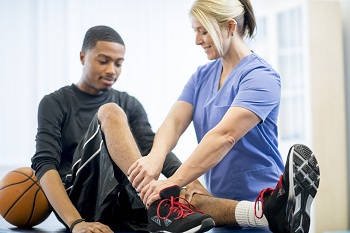 Much was made during the Summer Games in Rio when U.S. Olympic legend Michael Phelps showed up poolside with several dark red bruises on his body.
Much was made during the Summer Games in Rio when U.S. Olympic legend Michael Phelps showed up poolside with several dark red bruises on his body.
He and several other athletes turned to "˜cupping' to heal sore muscles-a therapy based in ancient medicine in which cups are placed on top of the skin before a vacuum is created by pumping air out, drawing the skin into the cup, breaking surface blood capillaries, theoretically leading to increased blood flow, quickening healing and recovery while reducing pain.
But does it work?
"While there is a place for supplemental treatments in addition to rehabilitation," said Roman Kinal, PT, CSCS, supervisor of outpatient therapy at McLaren Oakland, "therapist-led rehabilitation is the standard of care for patients and athletes in training or recovering from injury."
There is much more evidence-based research supporting therapist-led physical therapy in treating athletes.
"Our experienced therapists consistently get great results treating sports-related injuries using modalities and manual therapy to decrease pain and individualized exercise instruction which also helps to prevent future flare ups," Kinal said, "but that doesn't mean there isn't room for additional methodologies to help enhance their treatment."
McLaren Oakland rehabilitation services utilizes a computerized video system used to record and analyze movement-such as running, throwing, swinging-in slow motion in order to identify and correct abnormal movement patterns to help decrease pain and potentially enhance performance.
To learn more about rehabilitation services offered at McLaren Oakland or to inquire about setting up a physical therapy appointment, visit mclaren.org/oakland.